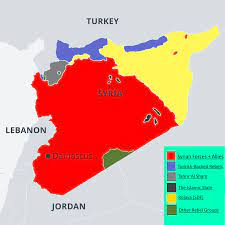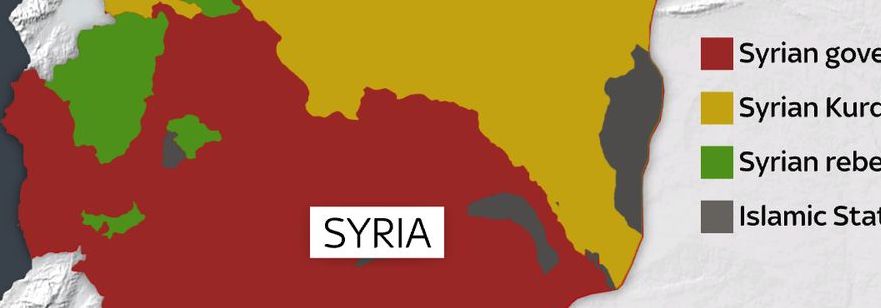by Barbara Nimri Aziz. December 7, 2021

It’s long past time for a reckoning by Washington on its disastrous policy in Syria. Instead of addressing the scope and venality of American efforts to crush the nation, rather than assessing new diplomatic moves towards Damascus by regional leaders, what did the New York Times, the paper that so shrewdly shapes the perception (and perhaps the direction) of America’s wars, choose to feature as a scoop on Syria? A single 2019 bombing of civilians by U.S. attack jets and the subsequent Pentagon coverup.We’ve seen a decade of destruction, the eruption of hatred among neighbors, unspeakable violence attributed by western media sources solely to the Syrian government. In fact, much of the devastation and division was inspired and aided militarily through the U.S.’s anti-Assad policy. This included alliances with terrorist rebels to foster sectarian conflict and create government-free zones, a media campaign demonizing Syria, wide-ranging sanctions and diplomatic isolation. Hundreds of thousands of families have fled their homeland generating migrant crises in Europe. The conflict has bled Syria of its youth and professionals. A third of its territory is essentially militarily occupied, its resources commandeered under U.S. supervision. A once thriving economy is systematically crushed, a formerly exemplary health system barely able to address the pandemic’s ravages. Citizens meanwhile are subject to intensified surveillance, and youths conscripted into the Syrian army face the grim reality of ferocious combat that’s already killed tens of thousands of recruits.
Against all odds and even with Russia’s sustained support, somehow, someway, Syria endures as a sovereign nation. The West’s regret over the country clawing back from the abyss beginning six years ago was evident in this BBC correspondent’s dismay: “…rebel-held territory has fallen back into government hands”. Significant wins by Syrian forces and their allies continued. Though the northwest is controlled by Turkey and northeast Syria by U.S. troops in alliance with the rebel Kurdish-led Syrian Democratic Forces well-known for their excesses. The country is subject to regular attacks by both Israeli and U.S. fighter planes, too. And the Islamic State menace, with its fighters temporarily sequestered near Aleppo, has not disappeared.

However many obstacles still face Syria, diplomatic breakthroughs seem to be underway. A phone call from Jordan’s King, a staunch U.S. ally, to Syria’s Assad in October was followed by a meeting in Damascus between the UAE foreign minister and Syria’s president. That exchange could not be unrelated to the UAE head of state Sheikh Mohamed’s high-profile meeting with Turkey’s Erdogan soon after. (Turkey was among those leading the charge starting in 2012 to oust Assad.) Adding to the shift signaled by Jordan and the UAE came discrete signals from Egypt and Saudi Arabia that it might be time to ‘return Syria to the Arab fold’.
How these gestures impact or reflect U.S. policy on Syria is uncertain. Biden slammed the overtures and his state department promises still tougher sanctions, vowing that Syria must not be allowed to rebuild. Even so, the director of an anti-Assad Middle East think-tank in D.C. comments that those regional shifts “indirectly reflect an acknowledgement that the regime of President Bashar Al-Assad has prevailed, however bloodily and messily”. (Messily indeed.)
The ramifications of these changes if they continue in the same direction will become clear soon. Regarding motives, speculation ranges from a strategy to isolate Iran, the search for investment opportunities, and the perception by leaders that their region is being sidelined by Washington as it focuses on China.
In the midst of this diplomatic flurry (largely marginalized by the U.S. corporate press) comes that headline-grabbing, New York Times article on Syria. Though it isn’t really about Syria or Washington’s foiled goals there either.
What the widely quoted November 14th Times investigative piece reveals is a covered-up military action in the Syrian village of Baghuz back in 2019. (A possible war crime, we’re informed, comparable to the infamous 1968 My Lai massacre in Vietnam.)
In the penetrating investigative style of The Times, the authors take us through the military bureaucracy that documents thousands of U.S. strikes annually. An Air Force lawyer based in the Qatar command center noted that the damage from that 2019 attack seemed excessive: 50, 70, possibly more civilians were slaughtered, many of them identified as women and children. That intelligence warranted an investigation. So details were shared with command centers up the chain. However, “…at nearly every step,” The Times learned, “the military made moves that concealed the catastrophic strike”…. “the death toll was downplayed” … “top leaders were not notified.” A second concerned agent based in the Pentagon’s Inspector General office reported similar stonewalling.

The journalists did not visit the killing field which in any case was swiftly and thoroughly bulldozed. Nor do they throw light on the secret Strike Force 9 tasked with ordering air attacks. Their story provides a glimpse into myriad levels of checks and balances meant to assure operation of a humane, responsible war machine. One would have thought the assembled evidence by a reputed newspaper might earn a tacit admission of error by the Pentagon. But no. Denials persisted. That the Baghuz bombings might constitute a war crime recedes into accumulated dust of probably countless similar incidents, some already recorded by Counterpunch authors.
The Times’ effort might have been better spent systematically recording civilian casualties resulting from U.S. bombings and the CIA’s nefarious alliances with Islamist rebels operating in Syria. What we need are synopses such Aaron Maté’s and reports by Vanessa Beeley. Beeley who, for her labors to correct corporate media’s interpretation of the conflict, has been unjustly vilified. Although her reports are reinforced by Counterpunch contributors during the decade of this dirty, dirty war.

